
Invention: A Life
by
James Dyson
Published 6 Sep 2021
G. 86–87 Dowson, George 51 Doyle Dane Bernbach 43 drypowder carpet shampoo machine 97–98 Dry Stone Walling Association 253 Dymaxion 233 Dysolve 98 Dyson (Ltd.) core technologies 132–80 see also individual technology and product name education and 260–91 see also education farming and 242–59 see also Dyson Farming future of 292–302 global reach of 181–208 see also individual nation name management structure 237–38 middle-class buyers and 119 origins of 80, 81–131 philanthropy see James Dyson Foundation premises see individual area name private company 79–80, 301–2 products see individual product name recruitment see recruitment, Dyson website 201–3 Dyson, Alec (JD’s father) 6, 7, 8, 9, 10–11, 12, 13, 15, 16, 17, 78, 191, 209, 246–47, 290, 291, 292 Dyson, Alexandra “Shanie” (JD’s sister) 7, 9, 11, 16 Dyson Centre for Neonatal Care, Royal United Hospital Bath 288–89 Dyson, Deirdre (JD’s wife) 3, 13, 25, 34, 59, 65, 67, 111, 117, 188, 245, 254, 299, 300–1 Amway lawsuit and 103 Ballbarrow and 70, 72 Byam Shaw School of Drawing and Painting 21, 22, 24–25 Dodington restoration and 293 Dyson family finances/financial risk and 3, 23, 61, 70–71, 80, 81–82, 84, 86, 97, 103, 107, 119 evening of opera arias, hosts 142 family background 23–24 James and Deirdre Dyson Trust and 288–89, 290 JD first meets 21–22 JD, on life with 309–14 marries JD 22 rug designer 23 Tube Boat and 61 Dyson Demo stores 185, 202 Dyson, Emily (JD’s daughter) 15, 22–23, 59, 86, 300–301, 310 Dyson Farming 242–59 anaerobic-digester power plants 257 drystone wall rebuilding 253–54 Dyson Ltd. and 243–44, 257–58 electricity, making and selling of 249, 251 food sales direct from farms 249–51 greenhouses 257 “greenwash” and 243 growth of 256 landlord, Dyson Farms as 256–57 machinery, agricultural 248–49, 252, 254–56 media reaction to 256 Nocton estate 245–53, 254 origins of 244–50 polylactic acid (PLA) extraction from corn starch 258 size of farms 242 subsidies and 250–51 underinvestment and lack of maintenance in farms acquired by 244 Dyson Institute of Engineering and Technology/Dyson University 2, 122, 198, 273–81, 276, 277, 279, 281, 282, 290 Dyson, Jake (JD’s son) 15, 22–23, 59, 86, 126, 172, 202–3, 280, 300, 301, 303–8 Dyson, James advice, avoids giving 313 Ballbarrow and see Ballbarrow birth 9 bloody-mindedness 2 Brexit/European Union, opinions on 130, 131, 192, 203–8, 210, 250, 251 Byam Shaw School of Drawing and Painting 19, 20–22, 25, 310 childhood 5–18, 245 companies see individual company name competitive nature, Dierdre Dyson on 312–13 confidence, Dierdre Dyson on 309–10 determination, Dierdre Dyson on 312 Dyson Ltd and see individual area of Dyson Ltd Dyson products and see individual product name Eagle painting competition (1957), wins 17 education, opinions on see education everyday use, become interested in designing products for 60 family and see individual family member name finances 22, 23, 37, 61, 70–71, 73, 78–79, 80, 81–82, 84, 95, 98, 99, 100, 102, 103, 107, 108, 118, 311 gap year 19 Gresham’s School 5–7, 8, 9, 11, 18, 142, 245, 289–91 “Ingenious Britain: Making the UK the leading high tech exporter in Europe” (report) 270 Kirk-Dyson and see Kirk-Dyson manufacturing, on British attitudes toward 40–44, 58–59, 64–66, 192–93, 203–8, 236–41, 259, 260–91 marries 22 media attacks upon 191, 198–99, 238–39 morality, Dierdre Dyson on 312 optimism, Dierdre Dyson on 314 philanthropy see individual philanthropic venture name practicality, Dierdre Dyson on 311 Rotork and see Rotork Royal College of Art, attends 13–14, 21, 25–36 Royal College of Art, Provost of 28, 283 Sea Truck and see Sea Truck Dyson Japan 185 Dyson, Mary (JD’s mother) 5–6, 8–9, 11, 12–13, 15, 18, 22, 24, 50 Dyson, Sam (JD’s son) 15, 22–23, 77, 81, 86, 300, 301 Dyson Symphony performance, Cadogan Hall, London (2018) 142 Dyson, Tom (JD’s brother) 7, 9, 11, 16 Eagle 17 Eames Soft Pad chair 219 Eames, Charles 28, 94 Eastern Electricity Board 115–16 ECKO 121 EcoHelmet 288 editorial coverage, value of 72–73 education 260–291 Academy Schools 268–69 Bath Dyson School project 268–70 Bath schools, Dyson beings engineering into classrooms of 271–72 Concorde engineers 264 Dyson Centre for Neonatal Care, Royal United Hospital Bath 288 Dyson Institute of Engineering and Technology/Dyson University 2, 122, 198, 273–81, 276, 277, 279, 281, 282, 290 Dyson School of Design Engineering, Imperial College 190, 296–97 exam setting 264 Great Exhibition and 262–63 Gresham’s School and see Gresham’s School “Ingenious Britain: Making the UK the leading high tech exporter in Europe” report 270 Innovation RCA Board 283–84 James Dyson Award 266, 284–88 James Dyson Building for Engineering, Cambridge University 281–82 James Dyson Foundation and 267–67, 271, 272, 273, 275, 281, 284, 285 learning by doing/trial and error/failing 260–61 manufacturing, British attitudes toward and 260–91 “master classes,” Dyson engineer 267 Mechanics’ Institutes and 261–62 Millennium Experience and 263 “Roadie” boxes, Dyson 268 Royal College of Art James Dyson Building 283 Royal College of Art, JD becomes Provost 28, 283 science and technology, British attitude toward teaching 26 technical schools 263–64 Egyptian Special Boat Brigade 47–48 Eilmar, monk of Malmesbury Abbey 121 Electricity Board 115–16 Elizabeth II, Queen 22, 137, 300 EMC (electro-magnetic compatibility) chamber 195 energy label performance data 204–6 English Electric F1.A Lightning Mach 2 RAF interceptor 125 English Heritage 269 entasis 223 Environment Agency 269 epoxy powder 73 ERM (EEC Exchange Rate Mechanism) 108 Essity AB 162 European Commission 205, 206 European Court of Human Rights (ECHR) 102 European Court of Justice (CJEU) 206 European Economic Community (EEC) 65 European General Court (EGC) 206 European Tissue Symposium (ETS) 162 European Union (EU) 130, 131, 192, 203–8, 210, 250–51 EV, Dyson (electric vehicle) (N526) 56, 209–28, 218 acceleration 226 aerodynamics 221 air-filtration technology 220 batteries 213, 214–15 chassis 212 cost 226 dashboard 220 digital micromirror 220 driving position 217 electric drive unit (EDU) 215 electric motors 224 head-up display, HUD 220 heating and air conditioning 220–21 length 216 lights 221 production halted 227 quarter-scale models in clay 222 range 212–13, 221 sales, direct 225 seats 217, 218, 219 site for construction of 224 space, feeling of 217 start-up acquisition and 214–15 suppliers 225 testing 21 tires 217 top speed 224 torque 224 turning circle 216–17 weight 219 wheels 221 windscreen 219–20 EVA (ethylene vinyl acetate) 68, 70, 76 experience, value of 2–3, 15, 29, 44, 183 failure, importance of 1–2, 3, 15, 79, 80, 85, 86, 132, 260, 266, 294 failed hand-made prototypes of cyclonic vacuum 1, 86–88, 260 Fairey Battle bomber 121 family businesses 295–96 Fantom 98, 99–101, 102, 103 Faraday, Michael 156, 214 farming.
…
To their great credit, sections of the media did investigate the BBC’s claims and found them entirely false. This attempt to mire Dyson and me in a political sleaze narrative failed, because it wasn’t true. It took a while, but eventually the BBC did apologize for its inaccuracies: Sir James Dyson apology - Various outlets, Wednesday 21 April 2021 We accept that Sir James Dyson is not a prominent Conservative supporter as was stated in some of our coverage of his text messages with the Prime Minister. The James Dyson Foundation made a charitable gift to support the Wiltshire Engineering Festival for school children. We accept that this does not signal affiliation to any political party and we would like to put the record straight.
…
Born in Norfolk, England, in 1947, he studied design at the Royal College of Art in London before joining Rotork to engineer and make the Sea Truck, a high-speed, flat-bottomed boat, with Jeremy Fry. Dyson believes that engineers and entrepreneurs can improve the world, and he helps them to do so through the Dyson Institute of Engineering and Technology, the James Dyson Foundation, and the annual James Dyson Award. Archive photos and footage available at: www.Dyson.com/JamesDyson SimonandSchuster.com www.SimonandSchuster.com/Authors/James-Dyson @simonbooks We hope you enjoyed reading this Simon & Schuster ebook. Get a FREE ebook when you join our mailing list. Plus, get updates on new releases, deals, recommended reads, and more from Simon & Schuster.

The Self-Made Billionaire Effect: How Extreme Producers Create Massive Value
by
John Sviokla
and
Mitch Cohen
Published 30 Dec 2014
During the Internet boom, Dell grew rapidly on account of its direct-to-customer sales model as well as its extremely efficient supply chain. Michael Dell stepped down as CEO in 2004, but returned as a result of a decline in the PC market, quality issues, and SEC charges. In 2013, he organized a successful leveraged buyout to bring the company private. Sir James Dyson b. 1947, United Kingdom Dyson James Dyson was a student at the Royal College of Art in London when Rotork Marine granted his first design commission for a flat-hulled boat. Dyson, however, is best known for his eponymous bagless vacuum cleaners. The first model, the G-Force, went through 5,127 iterations before it was ready for production in the mid-1980s; however, Dyson had difficulty finding a manufacturer in the United Kingdom or the United States.
…
While Mauborgne and Kim captured the way that corporations tend to think about untapped markets, Producers do not appear to be concerned with these distinctions. From the outside, the markets they work in all look purple, a blending of new approaches within old modes that reveal ways to re-create the space. James Dyson didn’t stop reimagining the vacuum cleaner because Mr. Hoover got there first. He just imagined it better, as a more beautiful object created for a public trained by brands like Braun and Apple to want to see function in the form. In fact, 80 percent of the self-made billionaires we studied made their fortunes in contested market spaces that would by any measure be considered “red.”
…
John Paul DeJoria launched John Paul Mitchell Systems into the populated market of high-end hair care; there were other ways to pay sellers online before Elon Musk bought PayPal; Bharti Enterprises founder Sunil Mittal got his start importing known, legacy technologies into India; Sara Blakely’s Spanx were inserted into a hosiery market dominated by L’eggs and Hanes; Carnival Cruise billionaire Micky Arison made his billions by reinventing the cruising business away from its status as a vacation option only for the wealthy and elderly; James Dyson invented the dual cyclone to compete in a product space that was so entrenched that Mr. Hoover’s name had become synonymous with “vacuum cleaner”; Farallon hedge fund founder Tom Steyer employed investing techniques similar to his peers; the housing developer Eli Broad embraced his flagship idea of building affordable homes without basements in part because he saw it had already been done somewhere else; coffee was already thousands of years old—one of the oldest commodities in the world—when Howard Schultz bought and then revamped Starbucks; and Glen Taylor, whose business was a printing shop, was part of a wave of business owners recognizing the escalating investments people were making in weddings.

How I Built This: The Unexpected Paths to Success From the World's Most Inspiring Entrepreneurs
by
Guy Raz
Published 14 Sep 2020
Protect What You’ve Built He formed a company: “My Biggest Mistake: James Dyson,” The Independent, February 6, 1994, https://www.independent.co.uk/news/business/my-biggest-mistake-james-dyson-1392336.html. After he returned: Jeff Stibel, “James Dyson: A Profile in Failure,” LinkedIn, June 16, 2015, https://www.linkedin.com/pulse/james-dyson-profile-failure-jeff-stibel/. after a three-year battle: Clare Dyer, “Hoover Taken to Cleaners in £4m Dyson Case,” The Guardian, October 4, 2002, https://www.theguardian.com/uk/2002/oct/04/claredyer. “terrible mistake”: “My Biggest Mistake: James Dyson.” “It was like giving birth”: Quoted in Stibel, “James Dyson: A Profile in Failure.” 17.
…
And what if that ball rotated 360 degrees for increased maneuverability and was attached to the front of a redesigned barrow that allowed for easy hauling and unparalleled stability? Well, look no further, because the Ballbarrow is here! Trust me, it will change your life, much the way it should have changed the life of its inventor, James Dyson, who, thanks to an opportunistic sales manager, a fickle board of directors, and a failed lawsuit, ended up with nothing to show for nearly a decade of hard work. Today, James Dyson is best known for the bagless cyclonic vacuum cleaner that bears his name. It has made him one of the richest men and largest landowners in the United Kingdom. But in the early 1970s, long before he spent five years in his coach house—which was really more of a glorified toolshed—building more than 5,000 prototypes of the vacuum cleaner that would make him a household name, Dyson bought the old farm on which that coach house sits and which inspired the invention at the heart of his very first business—the Ballbarrow.
…
And then the bank put them into foreclosure, which forced Curt and Dippin’ Dots to file for Chapter 11 bankruptcy—something, as an old-school guy who paid his debts as a matter of pride and principle, Curt thought he would never do. It was then that the company really began to slip away from Curt, much the way Ballbarrow gradually slipped away from James Dyson. Three days after Dippin’ Dots filed for bankruptcy protection, a father-son duo named Mark and Scott Fischer reached out to express interest in coming aboard as investors. They owned a family oil concern called Chaparral Energy, and they were planning on divesting from it a bit and putting some of that money to work in other places.

Black Box Thinking: Why Most People Never Learn From Their Mistakes--But Some Do
by
Matthew Syed
Published 3 Nov 2015
II This is a book about how success happens. In the coming pages, we will explore some of the most pioneering and innovative organizations in the world, including Google, Team Sky, Pixar, and the Mercedes Formula One team as well as exceptional individuals like the basketball player Michael Jordan, the inventor James Dyson, and the soccer star David Beckham. Progress is one of the most striking aspects of human history over the last two millennia and, in particular, the last two and a half centuries. It is not just about great businesses and sports teams, it is about science, technology, and economic development.
…
Chapter 10 How Failure Drives Innovation I The headquarters of Dyson are in a futuristic building about forty miles west of Oxford. Outside the front entrance is a Harrier jump jet—not a replica, a real one—and a high-speed landing craft. They both hint at the unconventionality of what goes on inside. James Dyson, the chairman and chief engineer of the company, works in a glass-fronted office just above the entrance. Along the back wall are the beautifully conceived products that have turned him into an icon of British innovation: super-efficient vacuum cleaners, futuristic hand dryers, and other devices yet to roll off the production line.
…
Twenty-six times I’ve been trusted to take the game-winning shot and missed.” For many the ad was perplexing. Why boast about your mistakes? But to Jordan it made perfect sense. “Mental toughness and heart are a lot stronger than some of the physical advantages you might have,” he said. “I’ve always said that and I’ve always believed that.” James Dyson embodies this perspective, too. He was once called “an evangelist for failure.” “The most important quality I look for in people coming to Dyson is the willingness to try, fail and learn. I love that spirit, all too rare in the world today,” he says. In the previous section we looked at how blame can undermine openness and learning, and how to address it.
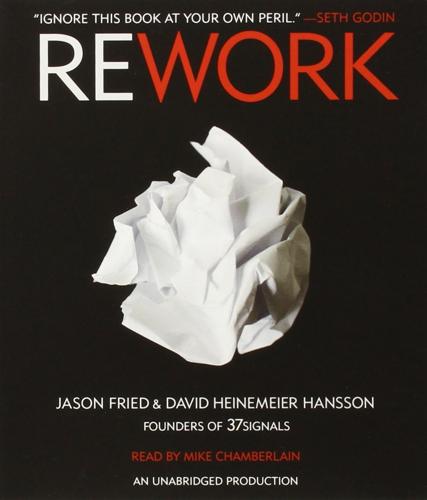
Rework
by
Jason Fried
and
David Heinemeier Hansson
Published 9 Mar 2010
We had the itch, so we scratched it. When you build a product or service, you make the call on hundreds of tiny decisions each day. If you’re solving someone else’s problem, you’re constantly stabbing in the dark. When you solve your own problem, the light comes on. You know exactly what the right answer is. Inventor James Dyson scratched his own itch. While vacuuming his home, he realized his bag vacuum cleaner was constantly losing suction power—dust kept clogging the pores in the bag and blocking the airflow. It wasn’t someone else’s imaginary problem; it was a real one that he experienced firsthand. So he decided to solve the problem and came up with the world’s first cyclonic, bagless vacuum cleaner.* Vic Firth came up with the idea of making a better drumstick while playing timpani for the Boston Symphony Orchestra.
…
But if you keep your mass low, you can quickly change anything: your entire business model, product, feature set, and/or marketing message. You can make mistakes and fix them quickly. You can change your priorities, product mix, or focus. And most important, you can change your mind. *Jim Rutenberg, “Clinton Finds Way to Play Along with Drudge,” New York Times, Oct. 22, 2007. *“Fascinating Facts About James Dyson, Inventor of the Dyson Vacuum Cleaner in 1978,” www.ideafinder.com/history/inventors/dyson.htm †Russ Mitchell, “The Beat Goes On,” CBS News, Sunday Morning, Mar. 29, 2009, www.tinyurl.com/cd8gjq ‡Eric Ransdell, “The Nike Story? Just Tell It!” Fast Company, Dec. 19, 2007, www.fastcompany.com/magazine/31/nike.html *“Mary Kay Ash: Mary Kay Cosmetics,” Journal of Business Leadership 1, no. 1 (Spring 1988); American National Business Hall of Fame, www.anbhf.org/laureates/mkash.html *“Stanley Kubrick—Biography,” IMDB, www.imdb.com/name/nm00004o/bio *Mission, Enterprise Rent-a-Car, http://aboutus.enterprise.com/who_we_are/mission.html CHAPTER PROGRESS Embrace constraints “I don’t have enough time/money/people/experience.”
…
And here’s a list of some of the people we know, and don’t know, who have inspired us in one way or another: Frank Lloyd Wright Seth Godin Warren Buffett Jamie Larson Clayton Christensen Ralph Nader Jim Coudal Benjamin Franklin Ernest Kim Jeff Bezos Scott Heiferman Antoni Gaudi Carlos Segura Larry David Steve Jobs Dean Kamen Bill Maher Thomas Jefferson Mies van der Rohe Ricardo Semler Christopher Alexander James Dyson Kent Beck Thomas Paine Gerald Weinberg Kathy Sierra Julia Child Marc Hedlund Nicholas Karavites Michael Jordan Richard Bird Jeffrey Zeldman Dieter Rams Judith Sheindlin Ron Paul Timothy Ferriss Copyright © 2010 by 37signals, LLC. All rights reserved. Published in the United States by Crown Business of the Crown Publishing Group, a division of Random House, Inc., New York.

Who Owns England?: How We Lost Our Green and Pleasant Land, and How to Take It Back
by
Guy Shrubsole
Published 1 May 2019
documents I obtained See Rob Edwards, ‘Ineos boss lobbied Osborne to bust unions and back fracking’, The Ferret, 27 February 2017, https://theferret.scot/ineos-boss-lobbied-osborne-unions-fracking/ tax haven of Monaco Jillian Ambrose, ‘Britain’s wealthiest man Sir Jim Ratcliffe leaves the UK to move to Monaco’, Telegraph, 8 August 2018. walk away from the EU Will Heaven, ‘James Dyson: If Brexit talks fail with the EU it’s “no big deal”’, Spectator, 29 July 2017; John Arlidge, ‘Exclusive interview: Sir James Dyson reveals the secrets of his success’, Sunday Times Rich List 2017, 7 May 2017. busy hoovering up Philip Case, ‘Brexiter Dyson warns government not to cut farm subsidies’, Farmers Weekly, 28 July 2017, http://www.fwi.co.uk/news/brexiteer-dyson-warns-government-not-cut-farm-subsidies.htm 33,000 acres, mainly in Lincolnshire See ‘Why is James Dyson hoovering up land?’, 19 September 2017, https://whoownsengland.org/2017/09/19/why-is-james-dyson-hoovering-up-land/ What Sir James is doing Gary Rycroft, Lancaster Guardian, 11 January 2015, http://www.lancasterguardian.co.uk/news/opinion/gary-rycroft-column-1-7039313 temerity to warn ministers Case, ‘Brexiter Dyson warns government not to cut farm subsidies’ generous EU handouts One ‘Dacre, P’ of Wadhurst in Kent received £28,219.15 in 2016 and £32,482.63 in 2017 in farm subsidies under the EU CAP; see http://www.cap-payments.defra.gov.uk/SearchResults.aspx farmland in Kent Dacre owns the East Lymde estate near Wadhurst and a grouse-moor estate near Ullapool in Scotland; see Kevin Rawlinson and Jasper Jackson, ‘Daily Mail editor received £88,000 in EU subsidies in 2014’, Guardian, 30 March 2016. 26,000-acre farm Acreage obtained by measuring the area of land covered by Environmental Stewardship payments to Lilburn Estate according to Natural England maps.
…
For years, ministers resisted its release, pressured by landowners’ lobby groups, who feared embarrassing stories would emerge about how much taxpayers’ money their members were receiving. But campaigners at the group FarmSubsidy.org persisted, and eventually the EU ruled that farm payments data had to become transparent. Some of the largest recipients of farm subsidies in recent years have turned out to be billionaire inventor-turned-landowner James Dyson, a Saudi prince who owns large horse-racing studs, and the Queen, for her private estate at Sandringham. The data on overall farm subsidies now published by the government doesn’t come with maps. That makes it harder to use for locating landowners’ estates. But farm subsidies under the CAP regime come under two ‘pillars’.
…
To cap it all, in August 2018 – having secured his spot at the top of the Rich List, plus a knighthood to boot – Ratcliffe announced he would be moving his fortune to the tax haven of Monaco. It’s a classic example of the modern rootlessness of capital. Other propertied billionaires who have done well out of the post-Thatcherite political settlement have also lobbied the government to reduce taxes further and maintain subsidies for big landowners. Sir James Dyson, the inventor of the bagless vacuum cleaner, has called for the UK to walk away from the EU without a trade deal, slash taxes and regulations after Brexit and become the ‘Singapore of Europe’. Leaving Europe without a trade deal would prove devastating for Britain’s small farmers, who rely on the EU as their main export market; but Dyson seems blasé about this.

The Cost of Inequality: Why Economic Equality Is Essential for Recovery
by
Stewart Lansley
Published 19 Jan 2012
Traditionally capitalism has thrived through the development of new products and new industries, by taking long-term risks with investment, by finding ways of becoming smarter, more inventive and beating the competition with better or cheaper products. That model of capitalism has not disappeared—witness the rise of Google, Facebook and Yahoo—but it has become a side-show in the non-tech world (where in Britain is the new James Dyson?). Instead, the new era of deregulation has created the opportunity to make money, big money, not by being smarter, or by taking a long view, or by investing in new systems, but by a number of new business practices that manipulate the financial structures of existing firms. ‘Business’ activity today means mergers, hostile takeovers and rearranging balance sheets.
…
Because of the low level of investment, Britain’s infrastructure remains poor compared with her main competitors. Too many plants operate with antiquated systems while levels of training have lagged behind other countries. Despite the introduction of freer markets, funding for training, research and development and innovation has slowed.220 Manufacturing entrepreneurs like James Dyson who invest in engineers are the exception. The evidence is of a strong link between R&D and related capital spending and added value and eventually, profitability. 221 Yet, apart from a handful of industries such as defence, pharmaceuticals and mobile phones, UK companies invest less in R&D, innovation and capital equipment than their international competitors.
…
As a result, the UK (London and the South-East in particular) has too many jobs associated with financial engineering and its spin-offs— the law, accountancy and property—and too few in productive, entrepreneurial, hitech sectors of the economy from design and software to green technology and engineering. Britain still has a number of world beating companies, built over decades. Rolls Royce is a high quality global player, employing 39,000 skilled workers worldwide. While James Dyson outsourced production from Wiltshire to Malaysia he has recently doubled his army of inventors, scientists and engineers to 700 in his quest for new products. Some industries—from health and the creative industries to high tech manufacturing and business services—have flourished. The scale of the collapse in Britain’s industrial base can sometimes be exaggerated.
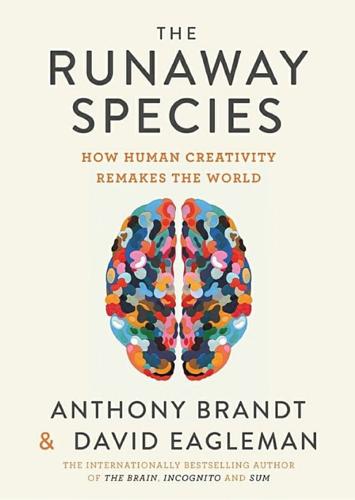
The Runaway Species: How Human Creativity Remakes the World
by
David Eagleman
and
Anthony Brandt
Published 30 Sep 2017
They finally figured out a way to reify Shockley’s anticipated effect – and at the other end of the labyrinth they emerged into the modern world of the transistor. Shockley would later refer to this error-filled period as “the natural blundering process of finding one’s way.” This process of bumping against failure – again and again – is how James Dyson invented the first bag-less vacuum cleaner. It took 5,127 prototypes and fifteen years for him to nail the model that would finally go to market. Praising error, here’s how he describes his process: There are countless times an inventor can give up on an idea. By the time I made my fifteenth prototype, my third child was born.
…
Tolerate risk 1 Frederick Dalzell, Engineering Invention: Frank J. Sprague and the U.S. Electrical Industry (Cambridge, MA: MIT Press, 2010). 2 Paul Israel, Edison: A Life of Invention (New York: John Wiley, 1998). 3 Thomas Edison, in Andrew Delaplaine, Thomas Edison: His Essential Quotations (New York: Gramercy Park, 2015), p. 3. 4 James Dyson, “No Innovator’s Dilemma Here: In Praise of Failure,” Wired, April 8, 2011, accessed August 21, 2015, <http://www.wired.com/2011/04/in-praise-of-failure/> 5 Marcia B. Hall, Michelangelo’s Last Judgment (Cambridge: Cambridge University Press, 2005). 6 Marcia B. Hall, Michelangelo’s Last Judgment. 7 Richard Steinitz, György Ligeti: Music of the Imagination (Boston: Northeastern University Press, 2003). 8 T.J.
…
Tolerate risk 1 Frederick Dalzell, Engineering Invention: Frank J. Sprague and the U.S. Electrical Industry (Cambridge, MA: MIT Press, 2010). 2 Paul Israel, Edison: A Life of Invention (New York: John Wiley, 1998). 3 Thomas Edison, in Andrew Delaplaine, Thomas Edison: His Essential Quotations (New York: Gramercy Park, 2015), p. 3. 4 James Dyson, “No Innovator’s Dilemma Here: In Praise of Failure,” Wired, April 8, 2011, accessed August 21, 2015, <http://www.wired.com/2011/04/in-praise-of-failure/> 5 Marcia B. Hall, Michelangelo’s Last Judgment (Cambridge: Cambridge University Press, 2005). 6 Marcia B. Hall, Michelangelo’s Last Judgment. 7 Richard Steinitz, György Ligeti: Music of the Imagination (Boston: Northeastern University Press, 2003). 8 T.J.
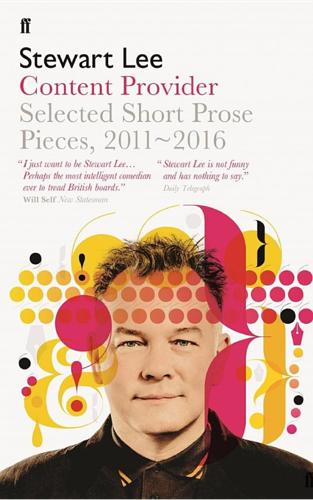
Content Provider: Selected Short Prose Pieces, 2011–2016
by
Stewart Lee
Published 1 Aug 2016
Boyle thought he was slyly mocking the government with his millions of dancing NHS nurses, but the assembled dignitaries just stood back and smiled through gritted teeth because they knew they were about to destroy for ever all the regional theatre operations that nurtured this smug liberal hipster, once they’d milked him and all his gullible volunteer friends dry for the grand opening ceremony of their sterile corporate egg-and-spoon festival. 7) James Dyson, who invented a kind of wanker’s Hoover, described the whole idea of teenagers being interested in arts and culture as “going off to study French lesbian poetry”, a dismissal that manages to be racist, sexist, homophobic and anti-intellectual all at once. Good French lesbian poetry renders Dyson’s Hoover irrelevant anyway.
…
Paddy Power desecrated what is either a religious site, a work of art, or both, in the name of grubby commerce, and then treated anyone who objected as if they were a humourless curmudgeon. “I hope everyone who works for Paddy Power, or thought this was funny, is fucked to death by a giant white horse, the cold-hearted sport morons,” I concluded, lads’-mag style. Then I took aim at James Dyson, whom I called the inventor of “the wanker’s Hoover” for describing teenagers interested in arts and culture as fools “going off to study French lesbian poetry”, and I wrote that I hoped “Dyson’s billionaire penis will be torn off in the suck-pipe of one of his own Hoovers, a fate that would never befall a French lesbian poet”.
…
Eighty-eight branches of Paddy Power were firebombed during the small hours of 21 December, and the business’s chief executives Patrick Kennedy and Cormac McCarthy both woke to find the severed heads of white horses next to them in their beds; eighty-eight dead white horses, their genitals horribly mutilated, were left on the doorsteps of eighty-eight branches of Debenhams, whose chairman, Nigel Northridge, is also a non-executive director of Paddy Power; James Dyson awoke to find himself bound with the flex of a Dyson cleaner, his home surrounded by dozens of Dysons, somehow modified to broadcast, through the apertures of their distinctive suck-funnels, readings of the works of Renée Vivien and Natalie Barney: “My brunette with the golden eyes, your ivory body, your amber / Has left bright reflections in the room / Above the garden. / The clear midnight sky, under my closed lids, / Still shines … I am drunk from so many roses / Redder than wine.”
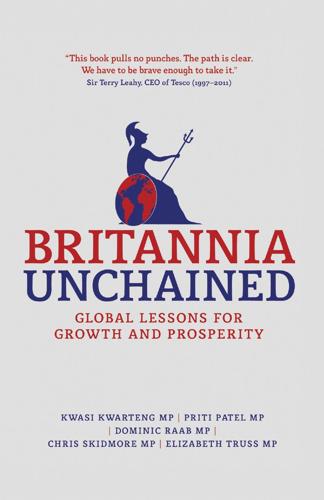
Britannia Unchained: Global Lessons for Growth and Prosperity
by
Kwasi Kwarteng
,
Priti Patel
,
Dominic Raab
,
Chris Skidmore
and
Elizabeth Truss
Published 12 Sep 2012
It can be explained by factors as varied as a particular Yiddish colloquialism, a revolutionary package of free market reforms, a government-sponsored incubator programme and, of course, an IDF medic puzzled by the lack of progress in trauma technology. Every country has its share of star innovators – such as Bernard Bar-Natan or James Dyson – but Israel enjoys more than most. Despite its small size and lack of natural resources, Israel has the highest number of tech start-ups outside of the US and the third highest number of companies listed on the NASDAQ. Israel has the highest amount of venture capital attracted per capita in the world, three times the level in the US, and 30 times the average in Western Europe.
…
The demise of British heavy industry in areas like the North East has left them economically deprived, but this should not be treated like a death sentence. All of this raises the question, ‘If they can do it, why can’t we?’ After all, there’s no shortage of inspirational examples of British entrepreneurs; James Dyson, Richard Branson and Peter Jones instantly spring to mind. Nor can the UK succumb to the quick and easy temptation of statism – that more government spending is the answer. Corporatism has little to recommend it. The malaise lies deeper than government policy alone can address. Reid Hoffman, founder of LinkedIn and one of the most famous Silicon Valley venture capitalists, argues that there is no reason why you couldn’t replicate the Valley’s success in Europe.
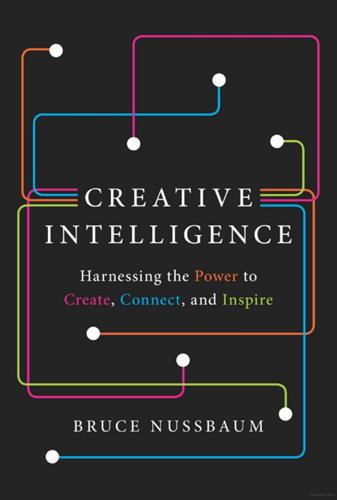
Creative Intelligence: Harnessing the Power to Create, Connect, and Inspire
by
Bruce Nussbaum
Published 5 Mar 2013
We don’t always know what connections will work best, what synthesis of two ideas will be the most effective. That’s why it’s important to keep an open mind about what your casting may bring back. You may have to relearn the joy of surprise, as it is often in the surprise that we find solutions. When James Dyson went casting about for a new technology for vacuum cleaners unlike the standard bag filters, he found it in sawmills, which traditionally use industrial cyclone fans to suck up the sawdust. That spinning cyclone method of picking up dirt became the heart of his Cyclone brand of vacuum cleaners, a successful cast if ever there was one.
…
You’re not born with a great ability to connect dots. You learn it. Some of us learn it in school, some at jobs, others in life. It’s not a difficult competence, but it is a deliberate one. The anxiety many of us feel about creativity often stems from a belief that we need to create something from nothing. We don’t. The scientists at ITRI and James Dyson began with something they already had—an area of expertise, a skill, a technology they were hoping to update—and went casting for ideas in both new and familiar places. What these innovators share is an ability to harness the serendipity of life to fashion something wholly original. Mining the Past When I visited him in Toronto in 2011, Bill Buxton had just finished working on a birch bark canoe using traditional Cree Indian instruments.
…
articleid=870; Robert Berner, “Why P&G’s Smile Is So Bright,” July 31, 2002, BusinessWeek, accessed October 3, 2012, http://www.businessweek.com/smallbiz/content/aug2002/sb2002081_2099.htm. 61 According to the Wall Street Journal: Michael Totty, “Paper Thin Screens with a Twist,” Wall Street Journal, September 26, 2010, accessed September 4, 2012, http://online.wsj.com/article/ SB10001424052748703470904575500342513725972.html. 62 When James Dyson went casting: Patrick Mahoney, MachineDesign.com, August 7, 2008, accessed October 3, 2012, http://ma chinedesign.com/article/industrial-design-design-the-dyson-way-0807. 63 When I visited him in Toronto: Bill Buxton, interviews with the author, March 7, 2011, April 5, 2011, September 15, 2011, May 7, 2012; http://www.billbuxton.com/, accessed October 3, 2012. 65 “I put the black and white: “Van Gogh’s Letters,” WebExhibits, accessed September 4, 2012, http://www.webexhibits.org/ vangogh/letter/20/607.htm; Debora Silverman, Van Gogh and Gauguin: The Search for Sacred Art (New York: Farrar, Straus and Giroux, 2000), 396. 65 Bob Dylan looked to Woody: Caspar Llewellyn Smith, Guardian, June 15, 2011, accessed September 4, 2012, http://www.guardian.co.uk/music/2011/jun/16/bob-dylan-woody-guthrie. 66 When asked in an interview: Cynthia McFadden, interview, ABC News, January 13, 2012, accessed September 4, 2012, http://abcnews.go.com/blogs/entertainment/ 2012/01/madonna-breaks-silence-on-gaga-born- this-way-controversy-2020-exclusive-tonight/. 66 has a replica of the Saturn V: Greg Klerkx, New Scientist, December 12, 2011, accessed at http://www.marssociety.org/home/press/news/ illputmillionsofpeopleonmarssayselonmusk on October 15, 2012. 66 the powerful rocket: http://www.nasa.gov/audience/foreducators/rocketry/home/what-was-the-saturn-v-58.html, accessed October 15, 2012; http://www.time.com/time/specials/ packages/article/0,28804, 1910599_1910769_1910767,00.html, accessed October 18, 2012. 66 BMW bought and revived: http://www.miniusa.com/#/learn/FACTS_ FEATURES_SPECS/history/storyOfMini-m, accessed October 15, 2012; http://www.topspeed.com/cars/mini/1959-2006-the-history-of-mini-ar10921.html, accessed October 15, 2012. 66 It is once again: http://www.motoringfile.com/2012/02/04/ businessweek-mini-wins-big-over-smart/. 67 Paul Polak has spent: Paul Polak and Jacqueline Novogratz, founder of the Acumen Fund, are my two heroes in redesigning models to improve life in what C.

The Lost Decade: 2010–2020, and What Lies Ahead for Britain
by
Polly Toynbee
and
David Walker
Published 3 Mar 2020
Toryism Triumphant The 2010s demonstrated the extraordinary staying power of the Tory party: battered, fractured, its leaders vainglorious and downright incompetent in varying measure, its ideological commitments rejected in poll after poll, yet its core support was sufficient to keep a grip on power, abetted as always by the media barons, money men and the individualist inertia that kept so many on the right side of the road, time and again. The money men performed indifferently. For all their rhetoric, Tory ministers presided over an economy that did not grow much; entrepreneurs did not miraculously step up and innovate, whatever the would-be titans of free enterprise such as James Dyson kept promising. Tory rebels showed the party at once fissuring and solid. Yes, Johnson expelled Brexit refuseniks. But consider Dan Poulter, a doctor who, after meeting Cameron in 2006, was persuaded to enter politics and became a minister in 2010. He later resigned, having woken up to ‘chronic underfunding of mental health and social care services, a shortage of social and appropriate sheltered housing, together with a benefits system that does not always adequately recognise the needs of people with severe and enduring mental illness’.
…
He voted leave, influenced by his son, who thought ending production subsidies – 55 per cent of UK farm income came from the Common Agricultural Policy – would see agricultural land prices fall, allowing younger people to get into farming. But again, it was a complicated story: the steep rise in the price of farmland had been driven by rich investors, attracted by the fact that farmland was inheritance-tax exempt. Among them was arch-Brexiter James Dyson, who was reported by Farmers Weekly to own 33,000 acres, more than the Queen. This most conservative of innovators squealed at the prospect of losing his own farming subsidy from the EU. The leave campaign promised cheaper food, neglecting to add that that had to mean less income for farmers. Anxious, Gove promised that the UK would maintain all the farmers’ subsidies post-Brexit, at least until 2022.
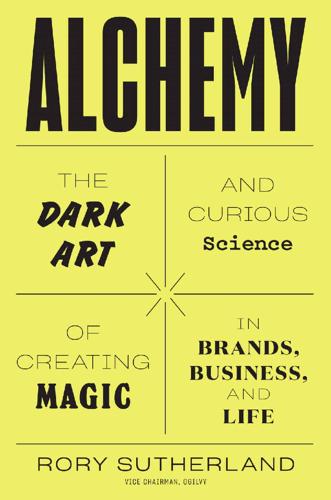
Alchemy: The Dark Art and Curious Science of Creating Magic in Brands, Business, and Life
by
Rory Sutherland
Published 6 May 2019
It’s true that logic is usually the best way to succeed in an argument, but if you want to succeed in life it is not necessarily all that useful; entrepreneurs are disproportionately valuable precisely because they are not confined to doing only those things that make sense to a committee. Interestingly, the likes of Steve Jobs, James Dyson, Elon Musk and Peter Thiel often seem certifiably bonkers; Henry Ford famously despised accountants – the Ford Motor Company was never audited while he had control of it. When you demand logic, you pay a hidden price: you destroy magic. And the modern world, oversupplied as it is with economists, technocrats, managers, analysts, spreadsheet-tweakers and algorithm designers, is becoming a more and more difficult place to practise magic – or even to experiment with it.
…
Zero would be good, as we could keep our existing linen and spend the money on other things. A lot of money was also acceptable, as I could then become excited by thread counts, tog ratings and exotic goose down. By contrast, spending something in between would have given me neither of these two emotional rewards. The success of the brilliant engineer-alchemist James Dyson in selling vacuum cleaners seems to arise from a similar mental disparity. Vacuum cleaners used to be a grudge buy that was only necessary when your old one had broken. Dyson added a degree of excitement to the transaction. Before he invented them, there was no public clamour for ‘really expensive vacuum cleaners that look really cool’, any more than people before Starbucks were begging cafés to sell really expensive coffee.

The End of Nice: How to Be Human in a World Run by Robots (Kindle Single)
by
Richard Newton
Published 11 Apr 2015
In contrast, pursuing a field where the success rates were low – such as being an artist or setting up a business – simply didn’t seem a good idea to well adjusted people. Those who chose that route were the exceptions. They were the misfits who embraced the risk of failure because they were driven. For the fortunate this lit the path to great success. Listen to these words from the entrepreneurial inventor, James Dyson. It sounds deliberately provocative, if you haven’t understood the creative potential of fearless discovery. Do your ideas ever fail?, he was asked in Wired magazine. “Absolutely,” he replied. “It’s when something fails that you learn. If it doesn’t fail, you don’t learn anything. You haven’t made any progress.
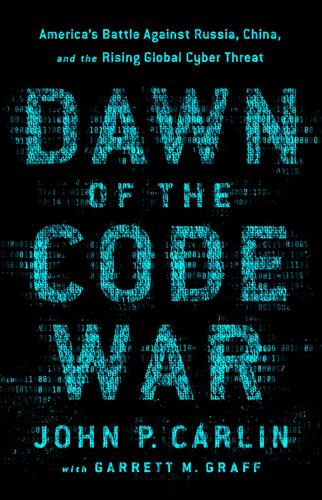
Dawn of the Code War: America's Battle Against Russia, China, and the Rising Global Cyber Threat
by
John P. Carlin
and
Garrett M. Graff
Published 15 Oct 2018
Economic Secrets in Cyberspace: Report to Congress on Foreign Economic Collection and Industrial Espionage, 2009–2011, Office of the Director of National Intelligence, October 2011, www.dni.gov/files/documents/Newsroom/Reports%20and%20Pubs/20111103_report_fecie.pdf. 6. Nick Collins, “Sir James Dyson Attacks China over Designs ‘Theft’,” Telegraph, December 6, 2011, www.telegraph.co.uk/finance/yourbusiness/8936685/Sir-James-Dyson-attacks-China-over-designs-theft.html; and James Hurley, “Ask China to Tackle Copycats, Dyson Tells PM,” Telegraph, June 25, 2011, www.telegraph.co.uk/finance/8597773/Ask-China-to-tackle-copycats-Dyson-tells-PM.html. 7. Yudhijit Bhattacharjee, “How the FBI Cracked a Chinese Spy Ring,” New Yorker, May 12, 2014, www.newyorker.com/news/news-desk/how-the-f-b-i-cracked-a-chinese-spy-ring. 8.
…
As one US intelligence report concluded, “Chinese leaders consider the first two decades of the 21st century to be a window of strategic opportunity for their country to focus on economic growth, independent innovation, scientific and technical advancement, and growth of the renewable energy sector.”5 The fastest way to accomplish those goals wasn’t to innovate at home—it was to steal our more advanced technology. It was an effort so widespread that they were even literally stealing vacuum cleaners. James Dyson, the inventor of the eponymous bagless vacuum cleaner, complained to the UK government that he’d spent millions of pounds combatting Chinese trade thefts—and still suffered losses to IP theft of as much as £40 million. He’d even hired private detectives who had seen his appliances being dissected and reverse-engineered inside Chinese factories.

User Friendly: How the Hidden Rules of Design Are Changing the Way We Live, Work & Play
by
Cliff Kuang
and
Robert Fabricant
Published 7 Nov 2019
But when those references gel in just the right way, a product can become iconic, able to represent not only its own histories but others. When you look at a Dyson vacuum cleaner, you see the jutting outlines of the motors and assemblies within. But you’re also looking at a “postmodern” design philosophy, which was roiling the architecture profession when James Dyson was having his first successes in the 1980s. The idea was for objects not to hide away their inner workings behind a clean facade, as they did in the heyday of modernism, but to display them. The philosophy reached its apotheosis in the Centre Pompidou in Paris, designed by Richard Rogers and Renzo Piano, the facade of which is crisscrossed with HVAC piping and an escalator tube.
…
Her research, with its emphasis on understanding the nuanced, everyday context in which people experienced product design, would become a pillar of IDEO’s design practice and the design industry at large. 1982: GRID COMPASS LAPTOP COMPUTER, Bill Moggridge Not only the first laptop computer, but the first to bear a clamshell case with a screen that could be readily adjusted for any sitting position, the Grid Compass presaged a world of portable, convenient, and user-friendly high technology. Moggridge went on to help found IDEO and coin the term “interaction design” to refer to the myriad ways users engage with technology. 1984: CYCLONIC VACUUM CLEANER (PROTOTYPE), James Dyson On his way to creating the first cyclonic vacuum cleaner, Dyson produced more than five thousand prototypes. Inspired by industrial methods for filtering dirt, the prototype couldn’t clog and didn’t need a dust bag. Dyson’s first production design, the DA001, was finally released in 1993, and bore a crucial improvement: a clear plastic dust bin, which showed users just how much dust they’d removed, creating a feedback loop that made people want to use the product more. 1984: MACINTOSH COMPUTER, Steve Jobs Apple’s first masterpiece worked on many levels, making new technology palatable and desirable in ways it had never been before.
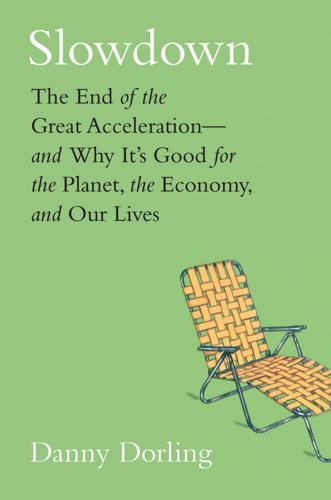
Slowdown: The End of the Great Acceleration―and Why It’s Good for the Planet, the Economy, and Our Lives
by
Danny Dorling
and
Kirsten McClure
Published 18 May 2020
No one today suggests inventing a new kind of shower without running water, or some sort of completely new toilet bowl (although a few people do suggest a return to squatting while defecating because it might be healthier). In fact, technological progress is now so slow that a minor adaptation to a common household appliance can be heralded as a great advance, as happened in 2007 when James Dyson was knighted for inventing a bagless vacuum cleaner. Back in 1901, several people in the United States and the United Kingdom invented slightly different versions of the original vacuum cleaner, but none was knighted for it, or otherwise lauded, because back then such progress was so rapid that before you knew it, there was another invention.20 Today we have to search very hard to find examples of innovation.
…
In the United States people are offered innovations such as Mark Zuckerberg’s “Facebook credits,” invented in 2009 and defunct by 2013, and Elon Musk’s SpaceX’s promise of an inaugural private passenger trip around the moon and back on a “Big Falcon Rocket” in 2023. The responses of many are “Why?” and “Really?” In the United Kingdom, we are forced to celebrate Sir James Dyson’s hand dryer and Sir Richard Branson’s tilting trains, even though he and his Virgin company did not invent them: businesses invent brands now, not completely new machines. For the foreseeable future, no great new economic step forward is being taken—China is very slowly catching up on a declining United States, but it will be many decades before the two countries’ per capita GDP is similar.
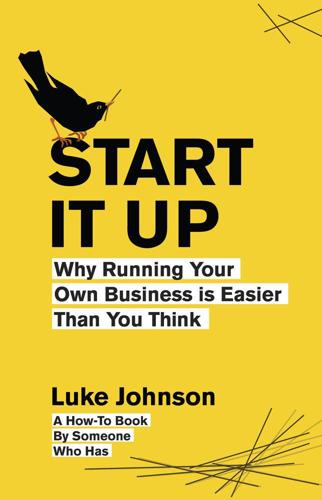
Start It Up: Why Running Your Own Business Is Easier Than You Think
by
Luke Johnson
Published 31 Aug 2011
He showed it to the Ford Motor Company in 1969, but subsequently entered into interminable litigation with it, almost reminiscent of Jarndyce and Jarndyce in Charles Dickens’s Bleak House. More than twenty years later, he settled for $10.2 million, but only after legal action had taken over his life. Unfortunately, patent infringement is a fact of life for inventors. Sir James Dyson, inventor of the bagless vacuum cleaner, talks in his autobiography Against The Odds (Orion, 1997) about various lawsuits against both Hoover and Amway. Knowledge of patent law and persistence bordering on the obsessive seem useful attributes if you want to be a successful inventor. The subject of intellectual property and its protection is a contentious one.
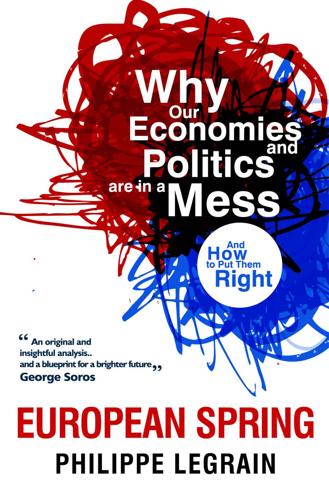
European Spring: Why Our Economies and Politics Are in a Mess - and How to Put Them Right
by
Philippe Legrain
Published 22 Apr 2014
If some scrape by in penury while others live in luxury, such indecency fragments society, preventing the interchange of ideas from which innovation springs. A dynamic economy will inevitably create huge disparities of wealth. Those who seize business opportunities and develop new technologies that create value for the rest of society ought to be rewarded for it. Few would begrudge James Dyson, a British inventor whose eponymous bagless vacuum cleaners have cleaned up, his fortune. Xavier Niel, the founder of Free, has done France a huge service by freeing up internet provision there. Anyone who has shopped at Ikea can thank Sweden’s Ingvar Kamprad. But alongside Europe’s deserving billionaires are many undeserving ones.
…
And as Thomas Piketty of the Paris School of Economics has pointed out, as growth slows and with it the creation of new wealth, old (inherited) fortunes weigh more heavily than before.723 A decent society should want to encourage effort and enterprise – by everyone, not just those who end up billionaires – without rewarding undeserved or unearned income. Battles between right and left about how high tax rates should be generally fail to make this distinction: those who want to cut taxes point to people like James Dyson, those who want to raise them point to Fred Goodwin. But while no economic system can perfectly distinguish between deserved income and wealth and the undeserved variety, societies could still do much better. The starting point is to tackle problems at their source, since undeserved income is generally a symptom of an underlying problem that also has wider costs.

Them And Us: Politics, Greed And Inequality - Why We Need A Fair Society
by
Will Hutton
Published 30 Sep 2010
Our collective wealth stems from the innovations of productive entrepreneurs, so we have to encourage them. We must keep the rewards that accrue from unproductive entrepreneurship low, and the status and rewards from productive entrepreneurship high, so that capitalism has a chance of delivering. The country wants and needs people like James Dyson, the inventor of the bagless vacuum cleaner, and Stelios Haji-Ioannous, the founder of EasyJet. It does not need too many private-equity firms like Guy Hands’ Terra Firma, which try to make tens of millions from re-engineering once-great companies like EMI, or the likes of Philip Green, who use financial leverage and exploit gaps in the tax system to make their fortunes.
…
Just as the trade unions’ capture of the state ended in the breakdown of social democracy and the evident bankruptcy of the institutions and policies it generated – from incomes policies to corporatist efforts to stimulate productive entrepreneurship – so the City’s capture of the state has ended in the current calamity. It has created a world of too many Philip Greens and too few James Dysons. The short-term structure of bank lending, the unwillingness to finance innovation, the creation of an ‘asset management’ industry that is more interested in buying and selling companies than exercising ownership responsibilities, excessive takeovers, sky-high fees and commissions and the sheer size of the City – attracting capital inflows that buoy up sterling – comprise a formidable anti-investment and anti-innovation structure.
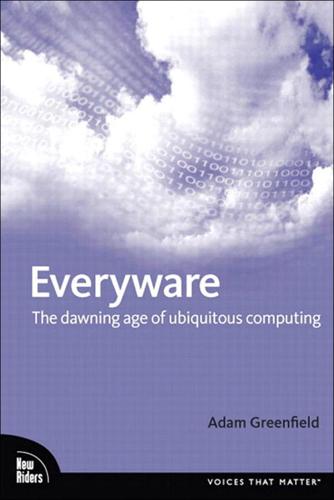
Everyware: The Dawning Age of Ubiquitous Computing
by
Adam Greenfield
Published 14 Sep 2006
For a variety of reasons, from the advantages that ostensibly accrue to first movers to the constraints imposed by venture capitalists, shareholders, and other bottom-liners, GOOD is rarely among the options pursued. Given the inherent pressures of the situation, it often takes an unusually dedicated, persistent, and powerful advocate—Steve Jobs comes to mind, as does vacuum-cleaner entrepreneur James Dyson—to see a high-quality design project through to completion with everything that makes it excellent intact. Moreover, the more complex the product or service at hand, the more likely it will be to have a misguided process of "value engineering" applied at some point between inception and delivery.

Think Like an Engineer: Use Systematic Thinking to Solve Everyday Challenges & Unlock the Inherent Values in Them
by
Mushtak Al-Atabi
Published 26 Aug 2014
It also aspires to embrace the evolutionary nature of the creative process while providing the systematic scaffolding that ensures eventual convergence on the suitable solution. Chapter 1 Engineering “Manufacturing is more than just putting parts together. It's coming up with ideas, testing principles and perfecting the engineering, as well as final assembly.” Sir James Dyson, Founder of Dyson Company “The path to the CEO's office should not be through the CFO's office, and it should not be through the marketing department. It needs to be through engineering and design.” Elon Musk, CEO & CTO of Tesla CEO & Chief Product Architect of Tesla Motors Engineering is old; as old as human civilisation itself.
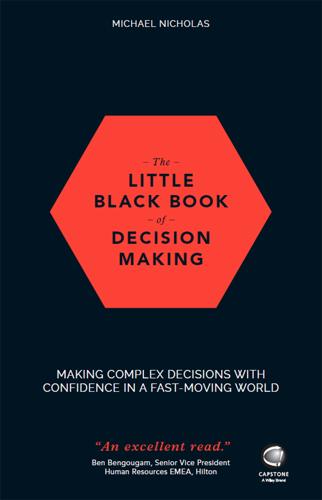
The Little Black Book of Decision Making
by
Michael Nicholas
Published 21 Jun 2017
It is said that Edison built 10,000 prototypes in his effort to develop a commercially viable light bulb; however, note that in his mind, he never failed, he simply “succeeded in proving that those 10,000 ways will not work”. This tenaciousness is a major factor in practically all significant advances, but there was another element at work with Edison that the rat does not display, and it is much less widely recognised: the creativity that is necessary to come up with 10,000 possibilities. James Dyson demonstrated the same quality in creating over 5,000 prototypes as he sought to bring his bag-less vacuum cleaner concept to fruition. In today's complex world the opportunity for disruption through innovation has never been greater. Shortly before I set out to write this section, there was an idea that was widely shared on the internet which powerfully highlights this point: Uber, the world's largest taxi company, owns no vehicles.

The Milky Way: An Autobiography of Our Galaxy
by
Moiya McTier
Published 14 Aug 2022
They wrote about it in journals, and images of her feeding him have appeared in museums. 7In case you were curious, the man who coined the term “parsec” is NOT the same Dyson who came up with the idea of the Dyson sphere, an artificial object built to capture maximum solar energy. That would be Freeman Dyson. Nor is he the same as James Dyson, who invented some nice vacuum cleaners. 8My grad school advisor and another member of our research group published the first reliable discovery of an “exomoon,” a moon orbiting a planet outside of our solar system! The Hubble Space Telescope’s observation schedule is public information, but Alex and David (the authors of the paper) didn’t realize that.

Will It Make the Boat Go Faster?: Olympic-Winning Strategies for Everyday Success
by
Ben Hunt-Davis
and
Harriet Beveridge
Published 15 Dec 2011
Remember a couple of decades ago most of us were using vacuum cleaners with bags quite happily? We might have grumbled a bit about emptying the bag (and when my teenage brother vacuumed up a burning coal Mum grumbled quite a lot about emptying a flaming bag), but it was good enough wasn’t it?.. Not for a West Country upstart called James Dyson, who had faith that there just had to be a better way and invented the bag-less vacuum that maintained its quality of suction. For decades plane operators gave us seat numbers and meals on trays and charged us a fortune until Stelios Haji-Ioannou believed there had to be a better way and created Easyjet.
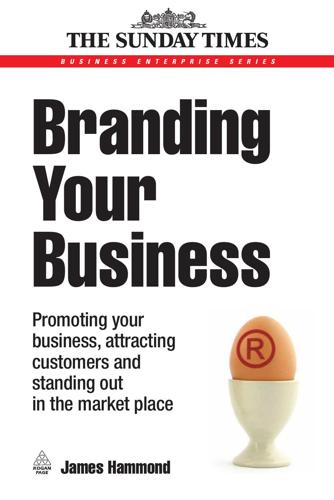
Branding Your Business: Promoting Your Business, Attracting Customers and Standing Out in the Market Place
by
James Hammond
Published 30 Apr 2008
What have you done in your life that’s worth telling others about? Many small business operators fail to acknowledge that even by starting their own companies they have achieved what for many is just a dream. Bill Gates, considered the world’s richest man, began his business in his garage, as did Jeff Bezos, the founder of Amazon.com. It took Sir James Dyson, another wealthy entrepreneur, 10 years and countless rejections from major manufacturers before he was able to launch his world-renowned cyclonic vacuum cleaners. The achievements of many business icons of this calibre have created great stories for the media, and most have gone on to feature in autobiographies, giving their brands even more ‘personal power’ (as well as extra revenue from book sales and royalties).

Rebel Ideas: The Power of Diverse Thinking
by
Matthew Syed
Published 9 Sep 2019
Why do some people embrace change while others fear it? Why do some master the art of reinvention, while others seem stuck with the status quo? Experts on innovation often distinguish between two different kinds. On the one hand, there are the directed, predictable steps that take one deeper into a given problem or specialism. Think of James Dyson patiently tweaking the design of his vacuum cleaner, learning more about the separation of dust from air as he adjusted the dimensions of his famous cyclone. With each new prototype, he learned ever more about separation efficiency. With each new step, he gained deeper knowledge of this small segment of science.
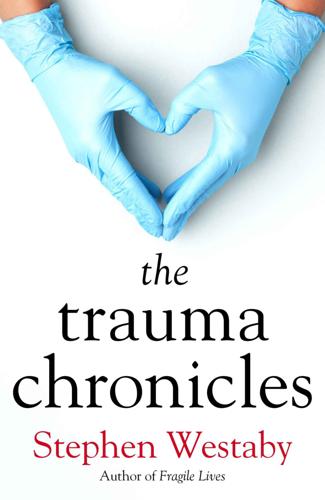
The Trauma Chronicles
by
Westaby, Stephen
Published 1 Feb 2023
Instead of ordering more regulatory approved breathing machines, the Health Secretary elected to spend £50 million with diverse engineering companies to develop the most basic models that could be rolled out quickly. These were delivered into the hands of untrained staff given just a couple of days instruction. According to the regulator, at least twelve ventilators produced with urgency were simply too risky to use. Having negotiated personally with the Prime Minister, Sir James Dyson wasted £20 million in his efforts. Incidentally, when we sought his help to improve battery technology for our British artificial heart we were simply ignored. Sure enough the knee jerk approach to sick patients was soon contributing to the UK’s poor survival rates. The Covid-19 Hospitalisation in England Surveillance System actually showed the intensive care unit of admission to be a risk factor for death equally as strong as older age, pre-existing heart disease, and the presence of pre-existing immunosuppression.
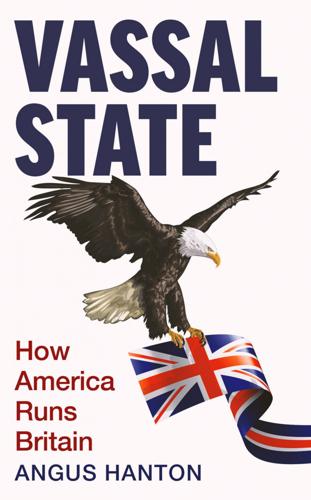
Vassal State
by
Angus Hanton
Published 25 Mar 2024
38055-1/presidential-economic-address. 23 ‘Global advisory board’, Pimco [website], https://www.pimco.co.uk/en-gb/global-advisory-board; ‘Alistair Darling elected to Morgan Stanley board of directors’, Morgan Stanley [website] (8 December 2015), https://www.morganstanley.com/press-releases/alistair-darling-elected-to-morgan-stanley-board-of-directors. 24 ‘George Osborne’, 9Yards Capital [website], https://theorg.com/org/9yards-capital/org-chart/george-osborne. 25 Mark Sweney, ‘Former chancellor Sajid Javid takes new role at JP Morgan’, Guardian (18 August 2020), https://www.theguardian.com/business/2020/aug/18/former-chancellor-sajid-javid-role-jp-morgan-adviser-us-bank-mp-conservative. 26 ‘Kwasi Kwarteng’, Wikipedia [website], https://en.wikipedia.org/wiki/Kwasi_Kwarteng. 27 Annabelle Dickson, ‘Boris Johnson’s parting shot: “Stay close to the Americans”’, Politico [website] (20 July 2022), https://www.politico.eu/article/stay-close-americans-boris-johnson-parting-shot/. 28 ‘Chancellor Rishi Sunak held US green card until last year’, BBC News [website] (8 April 2022), https://www.bbc.co.uk/news/uk-politics-61044847. 29 Peter Walker et al., ‘Akshata Murty may have avoided up to £20m in tax with non-dom status’, Guardian (7 April 2022), https://www.theguardian.com/politics/2022/apr/07/rishi-sunaks-wife-says-its-not-relevant-to-say-where-she-pays-tax-overseas. 30 Rupert Neate, ‘Rishi Sunak and Akshata Murty join UK rich list with combined £730m fortune’, Guardian (20 May 2022), https://www.theguardian.com/business/2022/may/20/sri-and-gopi-hinduja-named-uk-richest-people-james-dyson. 31 Kiran Stacey, ‘Labour accuses Rishi Sunak of angling for job after Elon Musk interview’, Guardian (3 November 2023), https://www.theguardian.com/politics/2023/nov/03/labour-accuses-rishi-sunak-of-angling-for-job-after-elon-musk-interview. 32 Tomas Malloy, ‘Tata Somerset gigafactory: UK government’s huge “£500m” battery plant subsidy explained’, SomersetLive [website] (22 July 2023), https://www.somersetlive.co.uk/news/somerset-news/tata-somerset-gigafactory-uk-governments-8616044. 33 House of Commons International Trade Committee, ‘Inward foreign direct investment: third report of session 2021–22’ [PDF], Parliament.uk [website] (21 September 2021), https://publications.parliament.uk/pa/cm5802/cmselect/cmintrade/124/report.html. 34 House of Commons International Trade Committee, ‘UK investment policy: seventh report of session 2017–19’ [PDF], Parliament.uk [website] (24 July 2019), https://publications.parliament.uk/pa/cm201719/cmselect/cmintrade/998/998.pdf, quoted ibid. 35 David Ricketts, ‘City stalwart Lord Grimstone lands Bain advisor role’, Financial News [website] (28 September 2023), https://www.fnlondon.com/articles/city-stalwart-lord-grimstone-lands-bain-advisor-role-20230928. 36 Joanna Partridge, ‘Behold London’s “landscraper”!
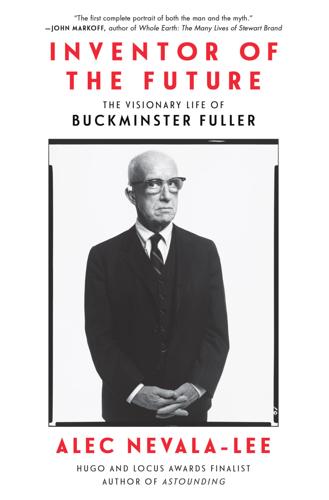
Inventor of the Future: The Visionary Life of Buckminster Fuller
by
Alec Nevala-Lee
Published 1 Aug 2022
Gehry paid an indirect homage to Fuller in his Dancing House in Prague, which he designed with Vlado Milunić: its roof was crowned with a twisted metal hemisphere, nicknamed Medusa, that resembled a dome caught halfway through an explosion, and it was lifted into place by a helicopter. Fuller’s fans in the design community included James Dyson, Yves Béhar, Roman Mars, and especially Olafur Eliasson, whose work unfolded at the intersection between art and science. For one project, Eliasson worked with Einar Thorsteinn, an Icelandic architect who had known Fuller well, to install two domes outside Copenhagen. At his studio in Berlin, he explored themes derived from Fuller, whom he saw as a model for a civilization that was confronting a series of crises: “He was organizing his present based on what he believed was the future.”
…
“Fuller did everything wrong”: Thom Mayne, ArtForum, November 2008, https://www.artforum.com/print/200809/thom-mayne-41980 (accessed January 2021). “He will put the data”: RBF, Education Automation, 85. Medusa: Frank Gehry, Gehry Talks: Architecture + Process, ed. Mildred Friedman (New York: Rizzoli, 1999), 214–15. James Dyson: “My History Hero: Buckminster Fuller (1895–1983),” July 6, 2012, https://www.historyextra.com/period/20th-century/my-history-hero-buckminster-fuller-1895–1983 (accessed May 2021). Yves Béhar: Yves Béhar interview, “Buckminster Fuller: Utopia Rising,” https://www.nowness.com/story/buckminster-fuller-utopia-rising (accessed February 2021).

The Great Convergence: Information Technology and the New Globalization
by
Richard Baldwin
Published 14 Nov 2016
In a Daily Mail story covering the move, trade union official Roger Lyons said: “Dyson has betrayed the 800 people whose jobs are being shipped out and hundreds more jobs from supply chain companies. He has betrayed British manufacturing and British consumers who have put him and his product where it is today.” Founder and owner James Dyson defended the move as saving jobs. In a Guardian interview, he said: We are a much more flourishing company now because of what we did and it’s doubtful if we could have survived in the long term if we had not done so.… We employ 1,300 at Malmesbury [the U.K. site]—engineers, scientists, and people running the business.
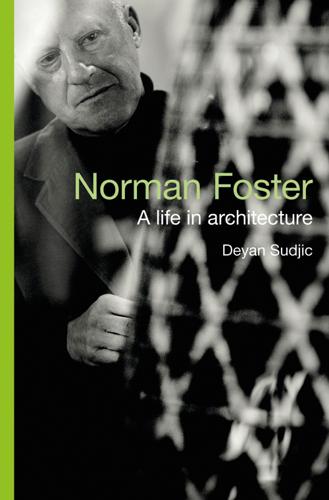
Norman Foster: A Life in Architecture
by
Deyan Sudjic
Published 1 Sep 2010
Studying those carefully rendered images that sliced away the layers of the fuselage to show the underlying geodesic structure of a Wellington bomber, designed to be tough enough to survive a direct hit in the air, or that laid bare the construction techniques used to build the Forth Railway Bridge, it’s easy to see why they would have ignited a spark of curiosity in the mind of a young James Dyson or a Norman Foster about the way the world worked. Years later, Foster tracked down John Batchelor, the artist responsible for some of the later cutaways, and asked him to make a drawing to analyse the vivid yellow steel masts that he had designed to support the roof of the Renault parts warehouse that he built outside Swindon.

Brexit, No Exit: Why in the End Britain Won't Leave Europe
by
Denis MacShane
Published 14 Jul 2017
As he points out, the BBC does not give equal space to climate change deniers whenever John Humphries or Nick Robinson interviews a scientist issuing a warning about global warming. But the BBC was prepared to broadcast complete lies about Europe without any challenge. Professor Gaber gave these examples. •Just one day before the vote, 1,280 business leaders signed a letter to The Times backing EU membership. This was ‘balanced’ on BBC bulletins by one man, Sir James Dyson, who had long ago come out for Brexit and had moved his business out of the UK to Malaysia. •When ten Nobel economics laureates warned of danger to the UK economy this was ‘balanced’ by an interview with a longstanding anti-European campaigner, Professor Patrick Minford, who has university status but at hardly the same level as Nobel Prize-winning economists of world renown.
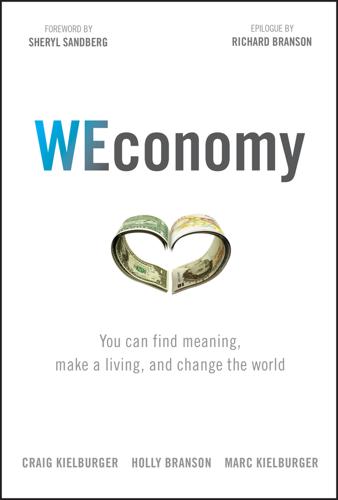
WEconomy: You Can Find Meaning, Make a Living, and Change the World
by
Craig Kielburger
,
Holly Branson
,
Marc Kielburger
,
Sir Richard Branson
and
Sheryl Sandberg
Published 7 Mar 2018
James Roberts created mOm after watching a documentary on Syria in which he learned that the stress of war has caused infant mortality rates to soar. He saw this as an opportunity to make a difference and invented mOm in a Design Engineering course at Loughborough University, where he went on to win the Sir James Dyson Global Prize for Innovation in 2014. The genius of mOm is that it's designed to be used anywhere, from rugged, harsh environments in rural Africa to time-sensitive neonatal transport in the developed world—and everywhere in between. mOm provides high quality, durable infant care conditions to service the most challenging settings.

Augmented: Life in the Smart Lane
by
Brett King
Published 5 May 2016
Quite an achievement when a prosthetic might often sell for more than US$40,000. Figure 6.2: This Iron Man-themed prosthetic limb was 3D printed for around US$350. (Credit: Microsoft Collective Project) A 3D-printed bionic hand designed by prosthetics start-up Open Bionics was the recipient of the 2015 UK James Dyson Award for design engineering innovation. What makes the Open Bionics hand stand out is its design, which enables it to be cheaper and faster to produce than many of the prosthetics currently available for amputees. Taking just 40 hours to 3D print, the robotic hand is built from custom pieces designed to fit amputees’ limbs precisely, and uses electromyographic sensors, which detect muscle movement, to control the hand.By flexing their muscles, wearers can choose whether to open and close the hand or grip objects.
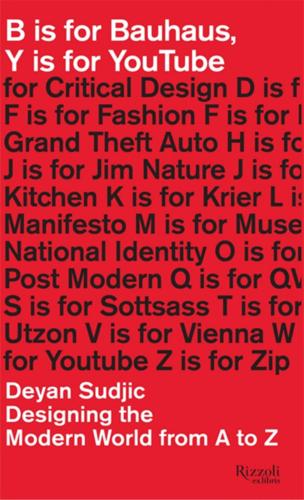
B Is for Bauhaus, Y Is for YouTube: Designing the Modern World From a to Z
by
Deyan Sudjic
Published 17 Feb 2015
In London, Goldsmiths can be seen as a school which triggered off a very particular strand of British art in the 1980s, just as the Royal Academy of Arts in Antwerp created a generation of Belgian fashion designers led by Martin Margiela and Dries van Noten. The Eindhoven Design Academy redefined the nature of Dutch design. The Royal College of Art in London has a remarkable range of achievement in many fields, with students from Mary Quant to David Hockney, James Dyson to Jasper Morrison. Its design and automotive schools in particular attract gifted students from all over the world, year after year, but there is no RCA style or manifesto. This might be seen as being more helpful for the students than it is for the professors. But what the Bauhaus had that no other school has had before or since is the combination of successive leadership from three of the leading designers of their time, a building that embodied the philosophy of its founder in a single unmistakable image, and an unshakable place at the heart of modernism, the dominant movement of twentieth-century culture.

Railways & the Raj: How the Age of Steam Transformed India
by
Christian Wolmar
Published 3 Oct 2018
John Chapman was a carriage manufacturer who had rather grander ideas about designing a flying machine, but soon gave up on the plan. He had been a successful manufacturer of knitting machinery for export to the Continent until he ran afoul of British export controls designed to limit foreign acquisition of machinery that could threaten the domestic industry. He was a kind of James Dyson of his time and was to play a key role in turning the dream of Indian railways into reality. Chapman wrote a pamphlet on the need for better transport for cotton and brought together a group of promoters to create the Great Indian Peninsula Railway company. He was motivated enough to take himself to Bombay to undertake a survey of potential routes, but initially chose an alignment that involved passing through already populated areas.
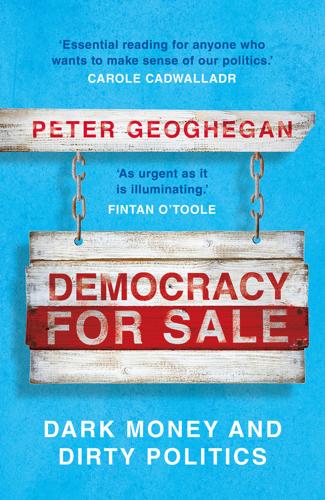
Democracy for Sale: Dark Money and Dirty Politics
by
Peter Geoghegan
Published 2 Jan 2020
The British sociologist Will Davies describes Boris Johnson and Nigel Farage as “kindred spirits in the project of injecting a bit of chaos into the liberal economic system”.74 It is striking, too, that many of the most fervent Brexiters in the business world have few or no ties to the British economy. In 2018, an investment fund co-founded by the European Research Group’s Jacob Rees-Mogg opened an office in Dublin, to guard against “considerable uncertainty” as Britain left the EU.75 Vacuum-cleaner tycoon and Leave backer Sir James Dyson no longer produces his machines in the UK. Ineos billionaire Sir James Ratcliffe moved to Monaco despite his vocal support for Brexit. The owners of a number of pro-Brexit newspapers are foreign, like Rupert Murdoch, or often control their media holdings through offshore companies, like the Barclay brothers.

The Measure of Progress: Counting What Really Matters
by
Diane Coyle
Published 15 Apr 2025
Growing concern about l abour and environmental standards have increased the extent to which the FGP tries to exercise control over the contract manufacturers following several reputation-harming scandals. Many say they have a close relationship with their contractors; for example, while the United Kingdom’s consumer products group Dyson uses contract manufacturers in Malaysia to manufacture its electronic appliances, founder Sir James Dyson has asserted: “We are not contracting out; we are heavily involved with the manufacturers and teaching them how to make each of our products as it comes out” (Azhar 2018). The firm is, nevertheless, contracting out. Recently “manufacturing on demand” websites have emerged, acting as digital platforms that match large networks of approved manufacturers to the businesses seeking to contract out manufacturing.

The Everything Store: Jeff Bezos and the Age of Amazon
by
Brad Stone
Published 14 Oct 2013
“If vendors or brands leave Amazon, they will eventually come back,” Wilke predicts, because “customers trust Amazon to be great providers of information and customer reviews about a vast selection of products. If you have customers ready to buy, and if you have a chance to tell them about your product, what brand ultimately doesn’t want that?” Dyson, the British vacuum maker, is one example of a brand that appears to treat Amazon with caution. It sold on Amazon for years and then an irate Sir James Dyson, its founder, visited Amazon’s offices personally to vent his frustrations over repeated violations of MAP. “Sir James said he trusted us with his brand and we had violated that trust,” says Kerry Morris, a former senior buyer who hosted Dyson on that memorable visit. Dyson pulled its vacuums from Amazon in 2011, though some models are still sold on the Amazon Marketplace by approved third-party merchants.
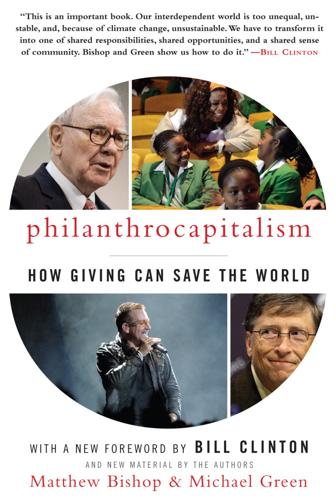
Philanthrocapitalism
by
Matthew Bishop
,
Michael Green
and
Bill Clinton
Published 29 Sep 2008
They include hedge fund boss Arpad Busson, who is behind the fundraising charity Absolute Return for Kids (ARK); carpet tycoon Lord Harris of Peckham; property millionaire Sir David Garrard; and Lowe advertising agency founder Sir Frank Lowe. Sir Tom Hunter has funded projects to increase the standard of leadership in the country’s schools and to encourage the teaching of entrepreneurship. Vacuum cleaner tycoon James Dyson is building a school focused on reviving Britain’s engineering traditions. In India, the Azim Premji Foundation has tried to raise the quality of education in several ways, in addition to piloting educational buses that visit shanty villages occupied by migrant workers. It conducts audits of schools—looking for 100 percent enrollment, 90 percent attendance, and 80 percent achievement of basic educational standards—and gives awards to recognize and encourage high achievement.

Think Like a Rocket Scientist: Simple Strategies You Can Use to Make Giant Leaps in Work and Life
by
Ozan Varol
Published 13 Apr 2020
The same is true for scientists working in a lab. For them, without the ability to be wrong, they could never be right. Some of their experiments succeed and others don’t. If things don’t work as planned, it’s a hypothesis proven wrong. They can tweak the hypothesis, try a different approach, or abandon it altogether. British inventor James Dyson described the inventor’s life as “one of failure.”10 It took Dyson fifteen years and 5,126 prototypes to get his revolutionary bagless vacuum to work. Several of Einstein’s attempts to devise a proof for E = mc2 failed.11 In some fields—for example, pharmaceutical drug development—the average failure rate is over 90 percent.
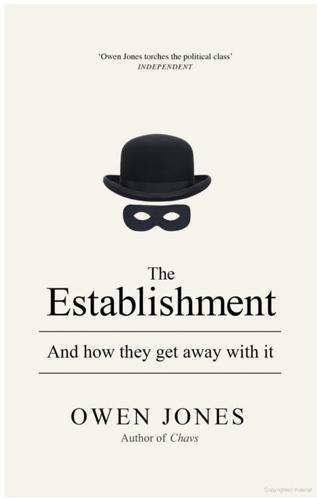
The Establishment: And How They Get Away With It
by
Owen Jones
Published 3 Sep 2014
Following his assumption of power in 2010, David Cameron set up a ‘Business Advisory Group’ which, according to its official website, ‘is a group of business leaders from sectors of strategic importance to the UK’ who, on a quarterly basis, provide ‘regular, high-level advice to the Prime Minister on critical business and economic issues facing the country’. Among its sixteen members are the heads of notorious tax-avoiding companies, such as Eric Schmidt, Executive Chairman of Google, and Vittorio Colao, the CEO of Vodafone. Another is Sir James Dyson, who shifted his manufacturing operations from Britain to the Far East in 2002 with the loss of 800 British jobs. Of course, there are no representatives of trade unions or consumers’ organizations: this is an opportunity for tycoons to exercise direct political influence over the Prime Minister and his key allies.

Billionaires' Row: Tycoons, High Rollers, and the Epic Race to Build the World's Most Exclusive Skyscrapers
by
Katherine Clarke
Published 13 Jun 2023
One buyer was Ken Moelis, the head of the boutique investment bank Moelis & Company, a Wall Street rainmaker who had advised on Hilton’s $26 billion sale to Blackstone in 2007. Moelis paid $62 million for a penthouse at the Zeckendorfs’ tower. Other buyers included Frank Fertitta, one of the brothers behind the creation of the martial arts company UFC, and the British vacuum cleaner mogul James Dyson. Fertitta spent $67.9 million for his apartment at the building, while Dyson forked out $73.8 million. These were the kind of buyers Macklowe, Barnett, Roth, and Stern were courting. Every buyer who signed on to the Zeckendorf building was a loss for them. Less successful, but still contributing to the inventory glut, was 53 West 53rd Street, the sculptural high-rise condo designed by the star architect Jean Nouvel for a site next to the Museum of Modern Art.
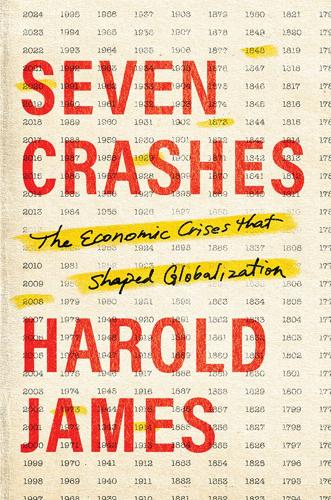
Seven Crashes: The Economic Crises That Shaped Globalization
by
Harold James
Published 15 Jan 2023
London’s new temporary hospital, named Nightingale after the heroic reforming nurse of the Crimean War, was opened in the ExCeL Center in East London, a symbolically interesting repurposing of the conference center that had been used for the landmark G20 meeting in April 2009. Second, there was an urgent need for medical equipment to deal with the temporary emergency: face masks, other protective equipment, ventilators. The British entrepreneur and innovator Sir James Dyson spent £20 million of his company’s money on developing a ventilator—only to be told in April that the British government did not actually need them. Third came a desperate search for methods of treating Covid patients, with many necessarily untried techniques and medicines being adopted in a quite unsystematic and chaotic way—meaning that it was hard to gauge their effectiveness.

Why We Can't Afford the Rich
by
Andrew Sayer
Published 6 Nov 2014
Sometimes, though, an owner of a firm – a capitalist – is enterprising, perhaps developing a new product from which millions of consumers benefit. Don’t they deserve their wealth? The Jobs/Dyson defence: don’t truly innovative people deserve all they get? Steve Jobs, the late CEO of Apple computers, was said to have been ‘worth’ $8.3 billion. If you were given a dollar every second, it would take 266 years to get that much. In the UK, James Dyson, famous for his Dyson vacuum cleaners, was estimated to be worth £2.65 billion (84 years at £1 per second), according to the 2012 Sunday Times Rich List. People like Jobs and Dyson are exceptional. But they are rare amongst the rich in creating new products of value. Paul Krugman points out that ‘very few of the top 1 percent, or even the top 0.01 percent, made their money that way.
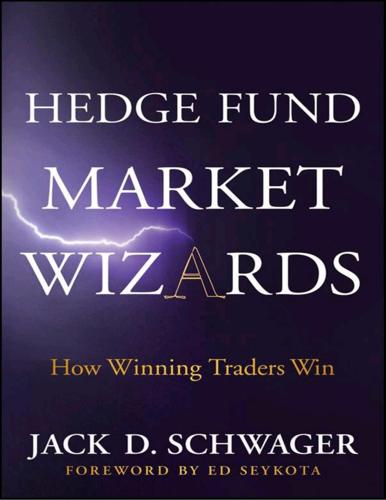
Hedge Fund Market Wizards
by
Jack D. Schwager
Published 24 Apr 2012
—Excerpt of 60 Minutes interview (October 10, 2011) with Alex Honnold, acknowledged to be the best free-soloing climber in the world, whose extraordinary feats include the first free-solo climb up the northwest face of Half Dome, a 2,000-foot wall in Yosemite National Park To do my vacuum cleaner, I built 5,127 prototypes. That means I had 5,126 failures. But as I went through those failures, I made discoveries. —James Dyson Foreword Once upon a time, a drought comes over the land and the wheat crop fails. Naturally, the price of wheat goes up. Some people cut back and bake less bread while others speculate and buy as much wheat as they can get and hoard it in hopes of higher prices to come. The king hears about all the speculation and high prices and promptly sends his soldiers from town to town to proclaim that speculation is now a crime against the state—and that severe punishment is to befall speculators.

The Rise and Fall of the British Nation: A Twentieth-Century History
by
David Edgerton
Published 27 Jun 2018
The list of great entrepreneurs whose animal spirits were unleashed in the new dispensation of the late 1980s and 1990s is rather thin. Sir Richard Branson is a brand, and his firms, many no longer owned by him, operate aeroplanes and trains, in the latter case highly subsidized. He was nothing like as pioneering as an airline boss as Sir Freddie Laker of the 1960s and 1970s. Sir James Dyson invented a new vacuum cleaner and a public lavatory hand-drying system, no longer built in the United Kingdom, but continues to invest in development. This is not the sort of transformational success that, say, Lord Nuffield had with motor cars in the interwar years. Lord Sugar, founder of Amstrad (which once rose to the FTSE 100), made and sold computers in the 1970s and boomed in the 1980s (taking over Sinclair Research), but he was no Bill Gates.